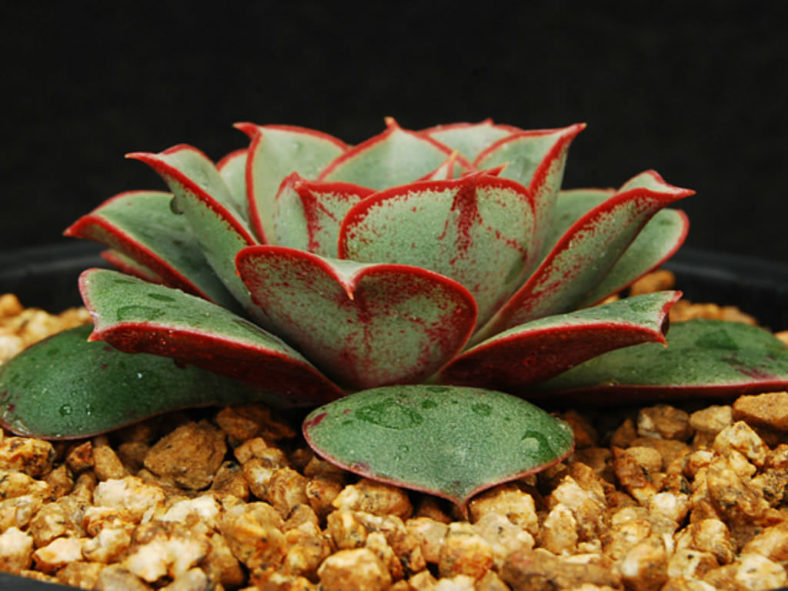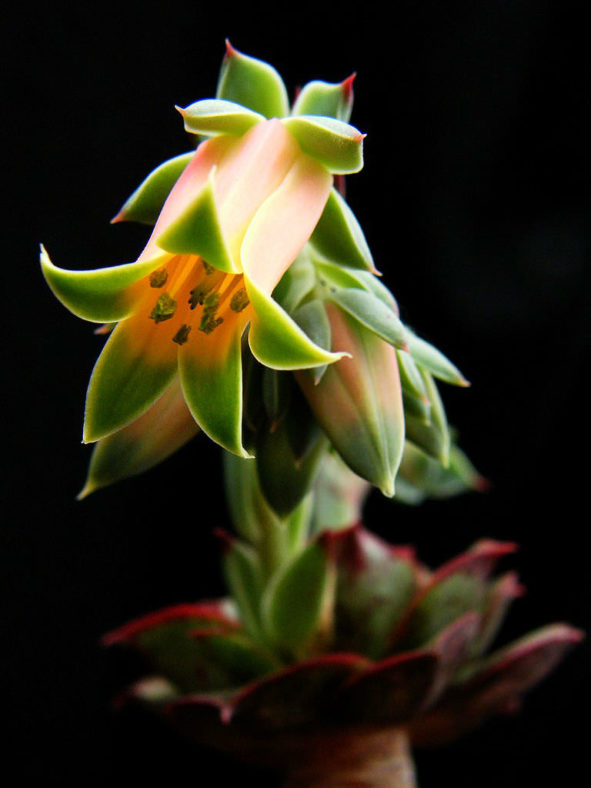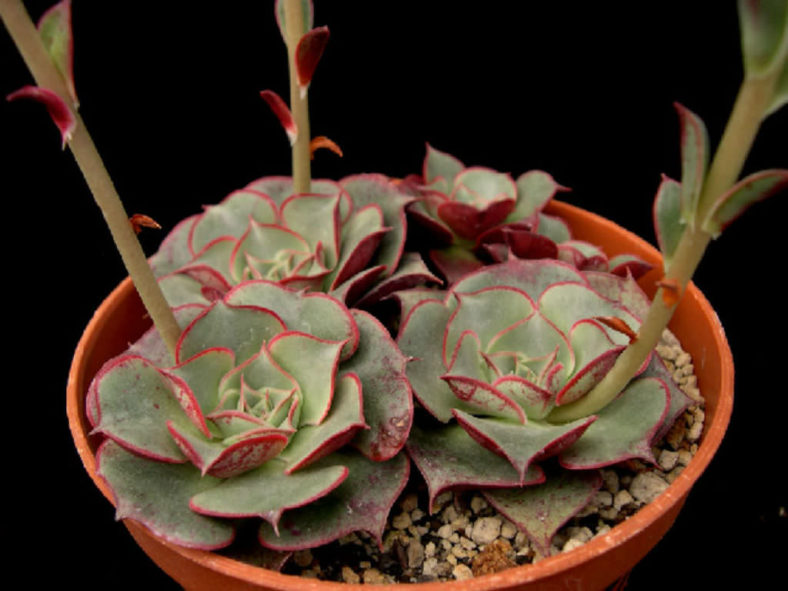Scientific Name
Echeveria longissima E.Walther
Scientific Classification
Family: Crassulaceae
Subfamily: Sempervivoideae
Tribe: Sedeae
Genus: Echeveria
Etymology
The specific epithet "longissima" (pronounced "lon-JIS-ee-muh") means "longest or very long". It likely refers to the notably longer corolla tubes of this species compared to other members of the genus.
Origin
Echeveria longissima is native to Mexico (Oaxaca and Puebla). It grows on hillsides on rocky outcroppings at elevations between 6,560 and 8,200 feet (2,000 and 2,500 m).
Description
Echeveria longissima is a beautiful succulent that forms a short-stemmed rosette of green leaves with red margins. The stem is erect, almost always unbranched, and can grow up to 2 inches (5 cm) tall and 0.6 inches (1.5 cm) in diameter. The rosettes are flat and can reach a diameter of 2.8 inches (7 cm). The leaves are broadly obovate, measuring up to 2.4 inches (6 cm) in length and 1.2 inches (3 cm) in width. Under intense light, they will take on more of the red coloring.
The flowers are urn-shaped and can reach lengths of more than 1.2 inches (3 cm) and diameters of 0.4 inches (1 cm). They are green near the tips of the petals but otherwise orange and appear on leafy inflorescences with 1 to 3 cincinni in spring. The inflorescences can grow up to 12 inches (30 cm) tall.

Subspecies and Varieties of Echeveria longissima
- Echeveria longissima var. aztatlensis
- Echeveria longissima var. brachyantha: The Mexican authors have classified this form of Echeveria longissima as a subspecies; however, since it primarily differs in corolla size, this classification is not justified. According to the International Crassulaceae Network, it would be more appropriate to consider it a variety.
- Echeveria longissima var. longissima
How to Grow and Care for Echeveria longissima
Hardiness: USDA hardiness zones 9b to 11b: from 25 °F (−3.9 °C) to 50 °F (+10 °C).
Most common Echeveria species are not complicated succulents to grow, provided you follow a few basic rules. First, be careful never to let water sit in the rosette, as it can cause rot or fungal diseases that will kill the plant. Additionally, remove dead leaves from the bottom of the plant as it grows. These dead leaves provide a haven for pests, and Echeverias are susceptible to mealybugs. Finally, as with all succulents, maintaining careful watering habits and providing ample light will help ensure success.
Repot as needed, preferably during the warm season. To repot a succulent, ensure the soil is dry before repotting, then gently remove the pot. Knock away the old soil from the roots, removing any rotted or dead roots. Treat any cuts with a fungicide.
Most Echeverias can be easily propagated from leaf cuttings, although some are better propagated from seeds or stem cuttings. To propagate a leaf cutting, place the individual leaf in potting soil for succulents and cover the dish until the new plant sprouts.
Learn more at How to Grow and Care for Echeveria.
Links
- Back to genus Echeveria
- Succupedia: Browse succulents by Scientific Name, Common Name, Genus, Family, USDA Hardiness Zone, Origin, or cacti by Genus
Photo Gallery
Click on a photo to see a larger version.


